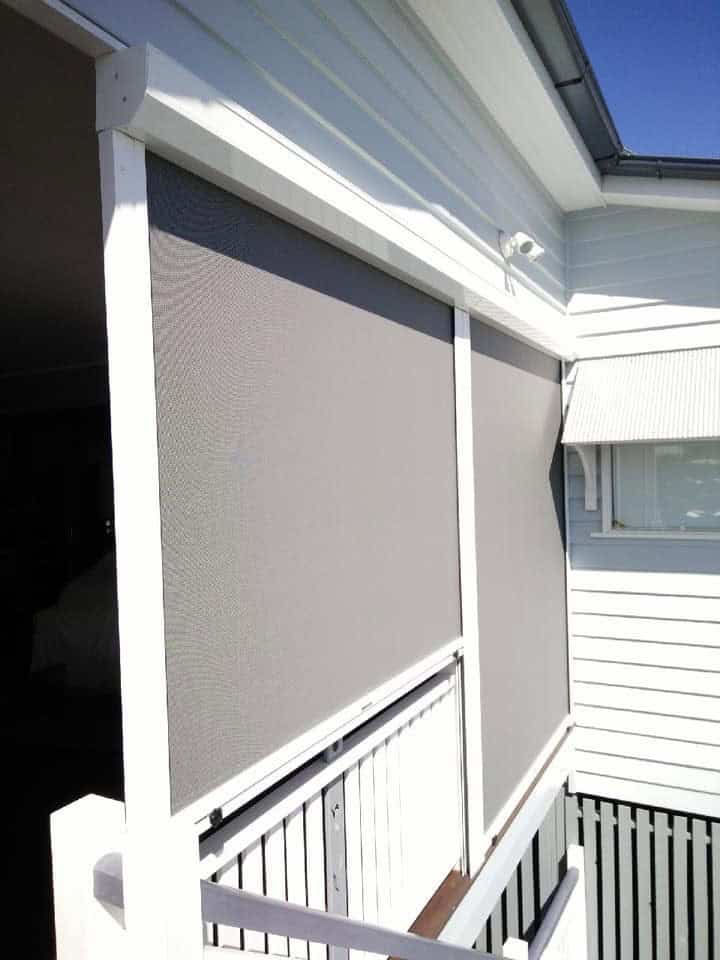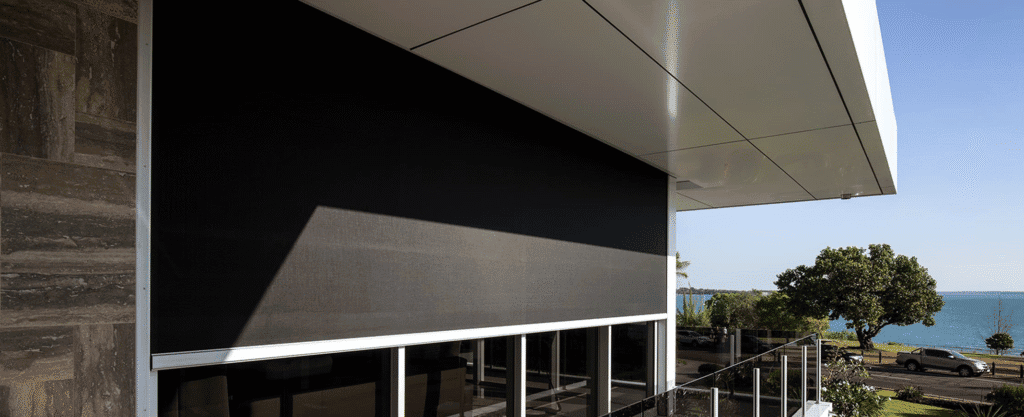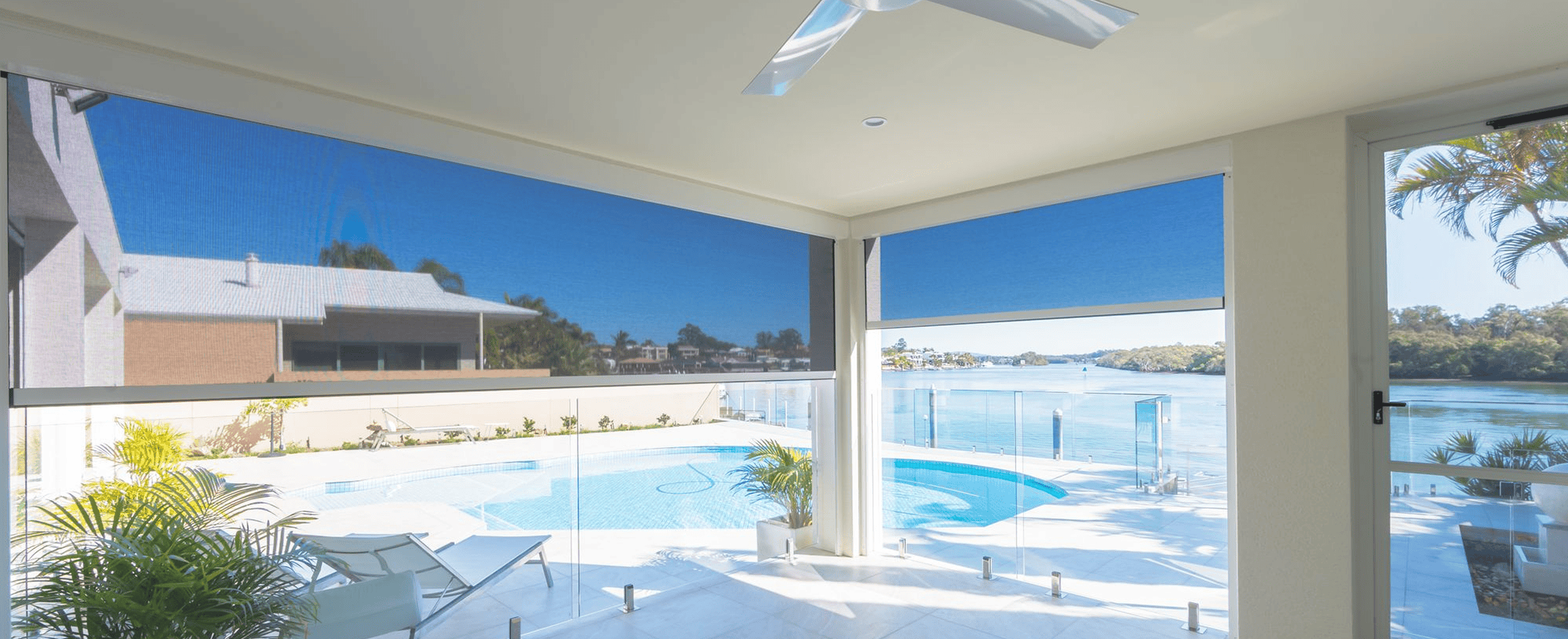Installing DIY Zipscreen blinds can be one of the most rewarding home improvement projects for creating a comfortable outdoor living area. Designed for Australia’s unique climate, Zipscreen outdoor blinds provide sun, wind, and insect protection while maintaining a sleek and modern look.
At Aussie Online Blinds, we make it easy for homeowners to order DIY Zipscreen kits that are custom-made to fit perfectly, shipped directly to your door, and built to last. If you’re upgrading your patio, balcony, or alfresco area, this guide will explain everything you need to know for a smooth Zipscreen installation, including preparation, tools, setup, and maintenance.
Understanding Zipscreen Blinds
What Is a Zipscreen Blind?
A Zipscreen is a premium-grade outdoor blind system designed to transform open outdoor areas into sheltered, private, and comfortable spaces. Unlike traditional outdoor blinds, Zipscreen uses a zip-guided side retention system that secures the fabric within specially designed side channels. This creates a smooth, tensioned finish without gaps, flapping, or rattling, even in windy conditions.
The clean, modern design makes Zipscreen suitable for a wide range of outdoor spaces, including patios, pergolas, balconies, and verandas. The system is built using high-quality materials, including durable aluminium components and UV-resistant fabric, ensuring it withstands Australia’s harsh sun and changing weather.
Available in a variety of fabric options and colours, Zipscreen blinds can block up to 99% of UV rays, reduce heat and glare, and offer varying levels of privacy and light control, making them ideal for both residential and commercial use.

How Does It Work?
The Zipscreen system works through a clever combination of precision engineering and durable materials. The key feature is its zip-guided track system, which locks the fabric securely within the side channels. As you raise or lower the blind, the zipper moves smoothly along the tracks, keeping the fabric perfectly tensioned at all times. This prevents it from blowing out in strong winds or developing wrinkles and sagging over time.
At the top of the system, a roller tube houses the fabric and mechanism, which can be operated manually or by motor. The bottom rail adds weight to keep the blind stable and straight, while the headbox protects the fabric when retracted, extending its lifespan and maintaining a neat appearance.
Because the sides and bottom of the blind are fully enclosed, the Zipscreen creates a near-sealed barrier that effectively blocks out sun, wind, rain, and insects. This means you can enjoy your outdoor space throughout the year without worrying about weather conditions.
Difference Between Manual vs Motorised Zipscreen Blinds
Before you begin your installation, it’s important to choose the Zipscreen system that best suits your lifestyle and outdoor setup.
Manual Zipscreen blinds are a simple, affordable, and reliable choice for most patios and verandas. You can select a spring-loaded version, which lifts easily with a gentle pull on the bottom rail, or a crank-operated system, which allows smooth adjustment using a detachable handle. Both options are ideal for smaller openings and areas where you want a hands-on, low-maintenance solution.
Motorised Zipscreen blinds, on the other hand, are perfect for homeowners seeking added convenience and modern functionality. With a motor integrated into the roller tube, the blinds can be raised or lowered at the touch of a button. Many systems also offer remote control, wall switch, or even smart-home integration, allowing you to operate your outdoor blinds from your smartphone or through voice commands.
Motorised blinds are particularly useful for large installations or hard-to-reach areas, and they bring a touch of luxury to any alfresco space.

Choosing between the two comes down to your needs, budget, and lifestyle preferences. Manual blinds are practical and budget-friendly, while motorised blinds offer the ultimate in comfort and control.
Tools and Materials You’ll Need for a DIY Zipscreen Setup
Before starting your DIY outdoor blinds project, prepare your tools and check that your components are ready.
Tools You’ll Need
- Power drill with masonry and timber bits
- Measuring tape
- Level and pencil
- Screwdriver set
- Step ladder
- Screws and wall plugs suitable for your wall type
- Safety gear such as gloves and goggles
Zipscreen Components
Your DIY Zipscreen kit will include:
- Roller tube and fabric
- Side channels
- Bottom rail
- Brackets or hoodboxes
- Crank handle or motor system (if applicable)
Measure Your Outdoor Area Accurately
While you may be eager to get started with the installation process itself, it’s important that you first measure your outdoor area. Accurate measurement is essential for a perfect fit. Measure the width and drop of your opening at three points (top, middle, and bottom). Record the smallest measurement to ensure the blind fits evenly. Check for obstacles like posts or trims that might affect installation.
Step-by-Step DIY Zipscreen Installation Process
Installing DIY Zipscreen blinds in Australia is straightforward if you follow each step carefully. Always install on a calm day and double-check that all components are level before securing them permanently.
Step 1: Mount the Brackets Securely
Mark your bracket positions using the level and pencil. Make sure they are perfectly aligned, as this will determine how smoothly your blind operates. Use fixings appropriate for your surface (masonry, timber, or metal) and ensure the brackets are firm before moving to the next step.
Step 2: Install the Roller Tube and Fabric
Fit the roller tube into the brackets, starting with the motor or crank end first. Ensure the fabric rolls in the correct direction and sits evenly across the width. If the fabric looks uneven, adjust its position before tightening any screws.
Step 3: Attach Side Channels or Cables
Secure the side channels vertically along both sides of the opening. Check that they are level and square with the roller tube. These channels keep the fabric tight and guide the zip as the blind moves.
Step 4: Test and Adjust Tension
Gently lower and raise the blind several times. Check for smooth movement and ensure the fabric remains taut throughout. If you notice ripples or jamming, slightly adjust the side channels or the roller alignment until the fabric moves freely.
Testing, Adjusting, and Safety Checks
Once the blind is installed, perform a few essential checks:
- Make sure all screws and bolts are tight.
- Confirm that the blind rolls evenly without tilting.
- Check that the side rails are secure and parallel.
- If motorised, test the motor’s up and down limits.
Avoid operating your blind in strong winds until you are confident the installation is firm and level.
Cleaning and Maintaining Your Zipscreen Blinds
Zipscreen blinds are designed to be low maintenance, but regular care will keep them looking great and operating smoothly for years. Clean the fabric occasionally using a soft cloth and mild soapy water, then rinse it thoroughly with clean water to remove any residue. It’s best to avoid harsh chemicals or abrasive cleaners, as they can damage the fabric and fittings.
Keep the side tracks free from dust, leaves, and debris by gently rinsing them out with water. This prevents buildup that might affect the movement of the blind. If you notice any stiffness or squeaking, apply a light lubricant (silicone spray) to the moving parts to maintain smooth operation. During periods of strong wind or storms, roll the blinds up to reduce strain on the fabric and hardware. With these simple steps, your Zipscreen blinds will continue to provide reliable shade and protection season after season.
FAQs
How do you measure for Zipscreen outdoor blinds?
Measure the width and drop of your opening in three spots, top, middle, and bottom, and use the smallest numbers. Check for any obstacles like posts or trims that could affect fitting.
Are DIY Zipscreen blinds durable and wind-resistant?
Yes. Zipscreen blinds are designed for Australian conditions and use a zip-guided side system that keeps the fabric secure, stable, and resistant to moderate winds.
What tools and materials are required for a DIY Zipscreen setup?
You’ll need a drill, measuring tape, level, pencil, screwdriver, step ladder, and suitable fixings for your wall type. Your DIY Zipscreens kit includes all the main parts like brackets, fabric, and channels.
Final Thoughts

Installing DIY Zipscreen blinds is an achievable project for most homeowners who are comfortable with basic tools and accurate measurements. Once installed, these outdoor privacy blinds instantly enhance your patio, veranda, or balcony by providing protection and comfort in every season.
At Aussie Online Blinds, we provide high-quality Australian-made Zipscreen blinds that are easy to assemble, durable, and designed to withstand local conditions. Each blind is made to order and delivered directly to your door, ready for installation.
Contact us today to transform your outdoor living space with a custom DIY Zipscreen setup and experience how effortless, stylish, and weather-ready your home can be.




